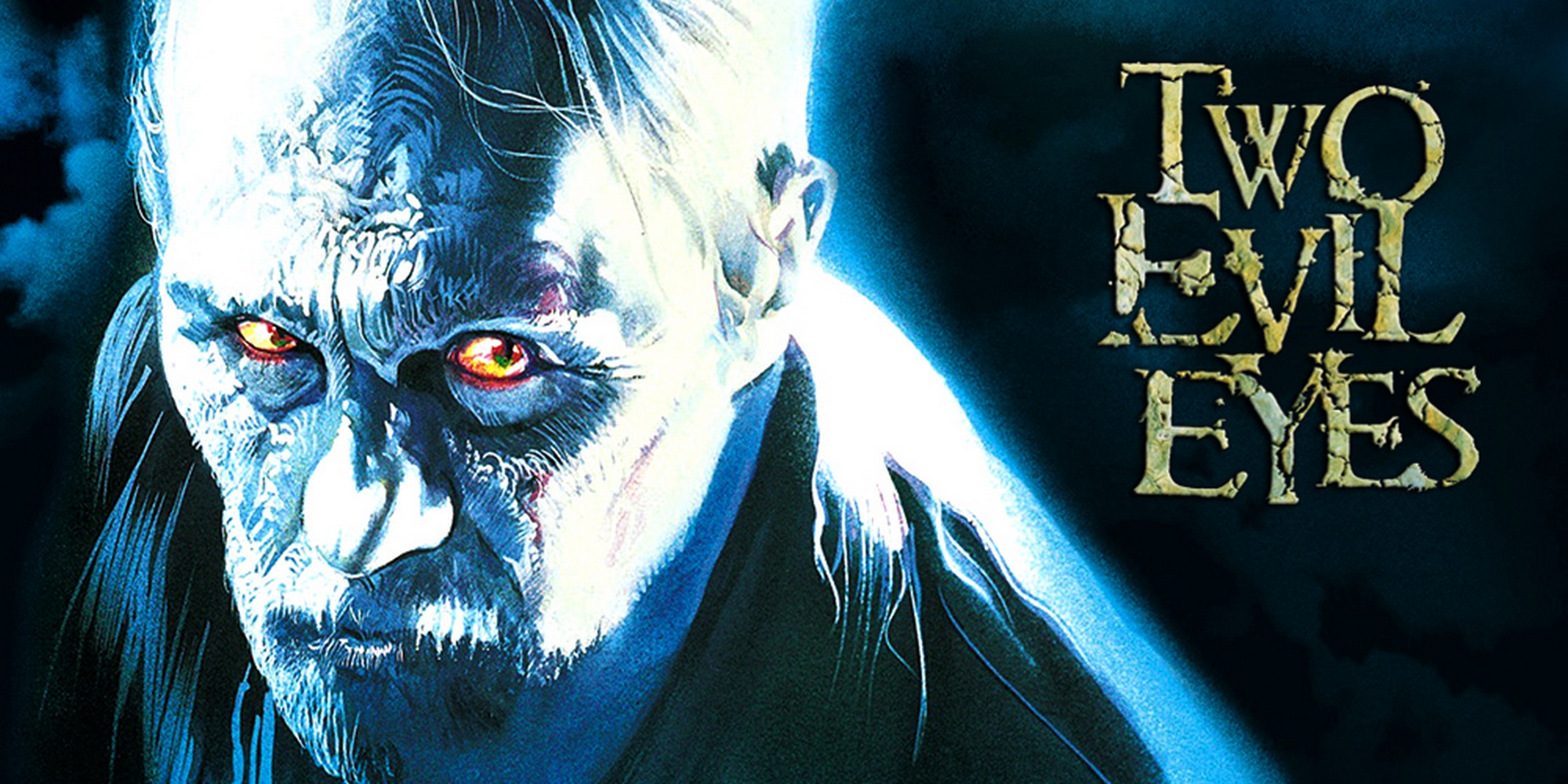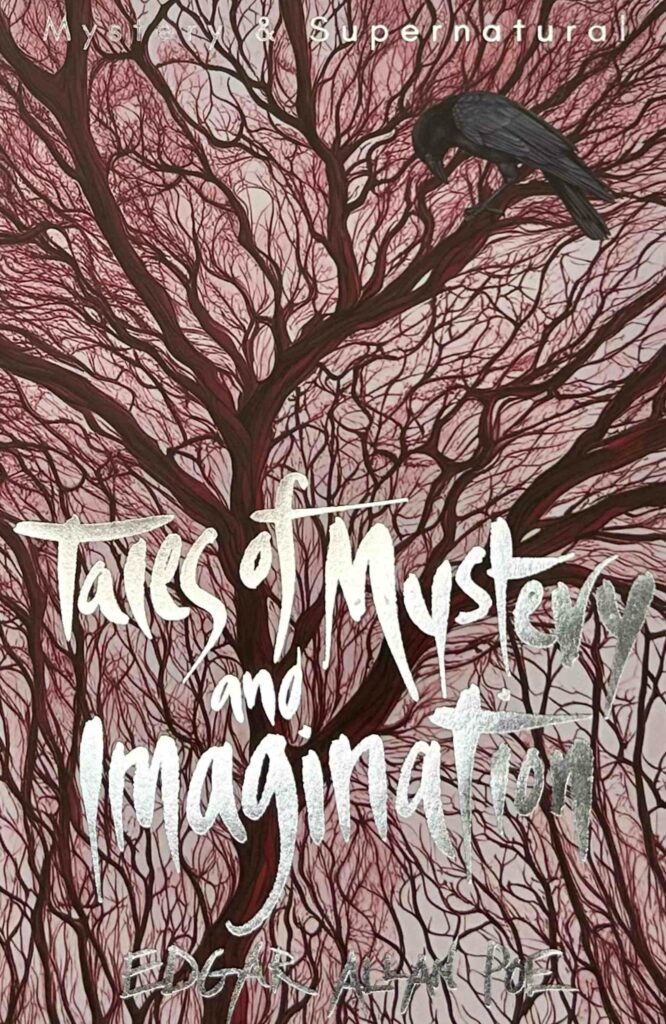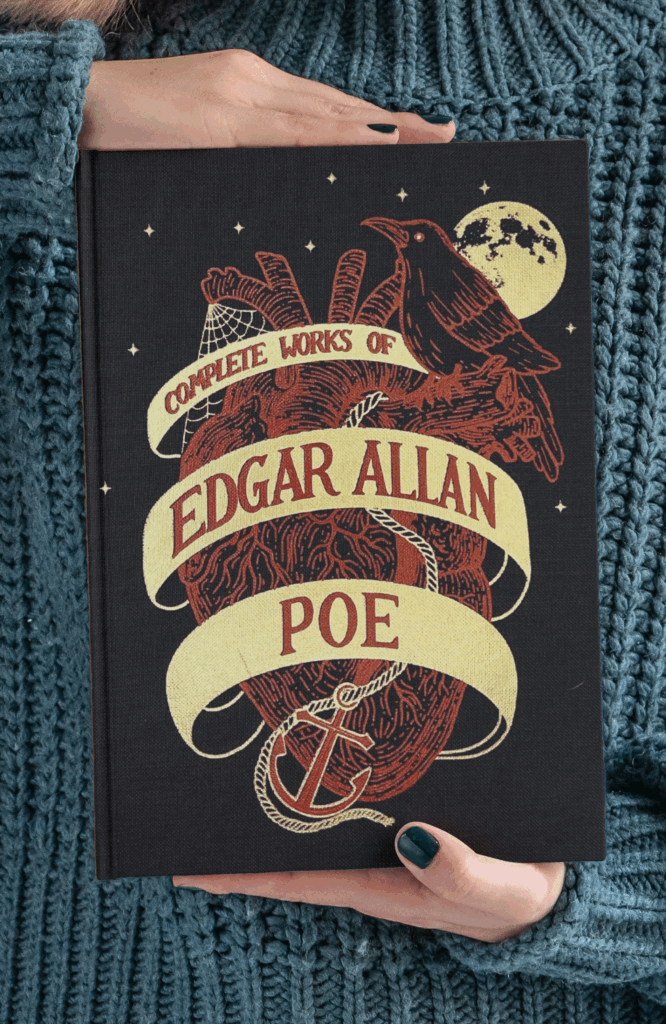
Three Evil Minds and Two Evil Eyes
It’s nearly Halloween, which makes it the perfect time for Parker Lancaster to look at the film adaptations of that master of the macabre, Edgar Allan Poe.
Stephen King once said, “I don’t have nightmares, I give them all to you.” That’s really what horror is all about, isn’t it? Maybe horror fans are gluttons for punishment, but we love this stuff. Whether it’s on film, in print, or in a haunting piece of artwork, we revel in fear and the unknown, and the more clearly the bearer of nightmares can express his or her vision, the more enticing the invitation into their weird little worlds. We treat these trips to the dark side like commodities, almost like they were Magic: The Gathering cards. We want to trade them, hoard them and collect them all (or catch ‘em all, if you’re into Pokemon). We are a greedy little lot, and often not too picky. We want nightmares of all kinds to fill in all the cracks and crevices and zigs and zags in our demented little brains.
This is the staying power of Edgar Allan Poe. Probably no other author in horror has more disparate and widely read journeys into the mad and the macabre. And a good narrative can’t truly be said to be a good story unless it is told well. Poe shines here too, with a mastery of the English language that few other horror writers of the 19th century or even today can boast. I’m of the opinion that to be a master of prose, one must also be a poet. It’s a testament to Poe’s talent that he’s just as celebrated for his poems as his short stories. But his prose is special in its own right. Any of his short stories has dozens of memorable turns of phrase and a vivid sense of twisted imagination and creativity, especially in all the juicy and bloody parts.
Sadly, the wonderfully devious imagination and craft on display in Poe’s writing have rarely translated well into film. As of this writing, his works have been adapted on film or television over 340 times, the vast majority being nano-budget independent short films that have never been seen by anyone but the production crew and the director’s spouse and/or pets. Pity the poor souls. In film history, Roger Corman is really the name of the game with respect to Poe films, a fact which those who have seen all of these films will find both pleasing and irksome in equal measure. Corman was and is a master of the low-budget film, especially in his directing heyday in the ‘60s. He produced and directed seven different film adaptations of Poe’s stories (sometimes more than one story per film), and they are competently made, to be sure. He knew how to stretch his dollar and effectively use and re-use sets, props and matte paintings to build his cinematic worlds. His frequent casting of legends like Vincent Price, Ray Milland, Jack Nicholson, Peter Lorre and Boris Karloff, and directing scripts by horror heavyweights Richard Matheson and Ray Russell (author of the novella and screenplay of the utterly awesome William Castle film “Mr. Sardonicus”), lends these films a considerable store of credibility and class, with charm, wit, and memorable dialogue to spare.
Unfortunately, his strange obsession with avoiding any semblance of “reality” at all costs lends these films an air (or rather a thick choking atmosphere so dense you can’t see your hands in front of you) of cheese. And not good cheese. Stinky cheese. That European stuff that emits the comical green wavy fumes and that your local grocer won’t sell because it stinks up the whole store and makes babies cry. Corman’s Poe films are universally silly and occasionally downright unfaithful to the source material.
That’s not to suggest that there are no good Poe films out there. Jean Epstein’s 1927 silent adaptation of “The Fall of the House of Usher,” Michael Reeves’s loose adaptation of “The Conqueror Worm” from 1968, Brad Anderson’s “Stonehearst Asylum” from 2014, and Raul Garcia’s visually striking “Extraordinary Tales” from 2013 all come to mind as worthwhile endeavours. And while not based directly on any Poe stories per se, James McTeigue’s “The Raven” from 2012 and Francis Ford Coppola’s “Twixt” from 2011 showcase some good performances of Edgar Allan Poe himself from John Cusack and Ben Chaplin, respectively.
This brings me to one final Poe film adaptation and the most interesting for horror fans. Horror is a wild and crazy genre and has been for about 60 years, but it really wasn’t until the ‘70s that it blossomed into its true weird, gross, violent, gonzo potential. Ever since then, the market has been awash in all manner of violent delights and violent ends, including ghosties, vampires, werewolves, demonic possessions, killer clowns, killer ghostie demon clowns, witches, goblins, pumpkin-shaped creatures, leprechauns, man-eating Trolls (oh my Gaaaaaawwwwd!), other assorted beasties, dream-dwelling child killers, zombies, sinister genies, mutant cannibal cults, creepy vivified dolls, creepy children, incarnate evils, and a plethora of good old fashioned psychos, creepos, wackos and serial killers (with or without masks, and usually with deep-seated mommy issues and obsessions with partially nude post-coital teenage girls…who also probably look like their moms).
There are two directors who stand tall in the small field of great horror directors who have had their hands in several of these abominable pies and have both made numerous masterpieces in the genre. And they both teamed up with one of the best makeup effects artists in film history in the middle of their long and illustrious careers for a 1990 anthology film based on Poe’s “The Facts in the Case of M. Valdemar” and “The Black Cat.” That film was “Two Evil Eyes,” and its directors and writers were George A. Romero and Dario Argento, respectively, with makeup effects supervised by Tom Savini.
The facts in the case of M. Romero: father of the zombie film, monkey farm-runner, director of three of the four greatest zombie films (the “Dead” trilogy) AND the greatest anthology horror film of all time (“Creepshow”) and occasional dabbler in vampires, surreal revenge fantasy, demented demon monkeys, and other horror subgenres with films like “Martin,” “Bruiser” and “Monkey Shines.” He also wore some pretty sweet grandpa glasses. Presently presumed dead.
The facts in the case of M. Argento: master of surreal and colourful Giallo horror, conjurer of cinematic witches (“Suspiria” is his unqualified masterpiece), murderous glowy-eyed beasts, psychically-controlled insect swarms, secret societies and ancient conspiracies. Looks alarmingly like someone out of a 16th-century portrait by Carpaccio or Bartolomeo. Presently presumed alive, though frequently alleged to be a living corpse owing to his gaunt, skeletal and haunting physical appearance.
The facts in the case of “Two Evil Eyes:” it’s a somewhat faithful, if padded out, adaptation of two of Poe’s better horror stories, with solid production values and performances, but some narrative misfires. Romero’s “Valdemar” half stars Adrienne Barbeau in glorious shoulder pads as Mrs Valdemar (a character created for the film), is a wholly invented plot with a gold-digging wife and her physician/hypnotist accomplice who scheme to make off with the titular and terminally ill Mr Valdemar’s fortune and end up accidentally condemning him to a supernaturally comatose existence straddling the living world and a vengeful spirit-filled limbo. It takes a nod from Hitchcock and gives the characters clearer motivations and narrative momentum, which work in the film’s favour, but mucks up the ending with a nonsensical scene of the baddie getting his comeuppance from what basically amounts to the Blue Man Group from hell, and a rather on-the-nose closing shot of ill-gotten money dripping with blood (do ya get it!?). It’s a far cry from the simple original tale of the mysteries of mesmerism, the mind’s hidden power over the body, and the horror of paralysis and protracted death.
Argento’s “Black Cat” segment fares a bit better, sticking fairly closely to the original story, albeit with numerous embellishments and a hodgepodge of random Poe references. Harvey Keitel plays Rod Usher (no relation to the other guy, one assumes), a nihilistic crime scene photographer with sadistic and abusive tendencies who is driven to depravity and debauchery by the presence of his girlfriend’s new cat. The film gives nods to “The Wicker Man” and features a great line that is sadly missing from Poe’s text. The mad protagonist succinctly explains his life philosophy: “To be evil only for the love of being evil.”
It’s easy to see why Romero and Argento chose their respective stories. One could argue that “Valdemar” is one of the first zombie stories in American literature. And “Black Cat” with its witch and pagan undertones are certainly in Argento’s wheelhouse. Part of the beauty of Edgar Allan Poe’s writing is in its variety and longevity. When you have film adaptations of your work stretch over a 110-year period and counting, when one of the best Halloween TV specials ever made is based on your poem (“The Raven” segment in the first-ever “Treehouse of Horror” episode of “The Simpsons,” as masterfully read by James Earl Jones), and when a great bluegrass ballad (“Anabelle Lee” by Sarah Jarosz), of all things, is written 162 years after the poem, you’ve done something right.
In closing, what is my final verdict on “Two Evil Eyes,” a film of immense promise, uniting three of the great evil minds of our era? 8 evil eyes out of 13.
Meh.
Oh well. We’ll always have Poe.
Books associated with this article

Tales of Mystery and Imagination
Edgar Allan Poe
